
Access
Research
Network
|
|
Access |
ARN-Announce is the on-line announcement and information service of Access Research Network. ARN generates announcements to the current ARN Announce list as information becomes available. You have received this message because your email address was submitted to this list. Subscription and Unsubscription information is at the end of this message.
Click here for a text-only version of this document.
IN THIS ARN-ANNOUNCE:
New Video Documentary: The Privileged Planet
Our best selling video of all time has been the Unlocking the
Mystery of Life documentary that presents the evidence from biology
for intelligent design in a style and quality that matches anything you
will find on the History Channel or PBS. Now the same folks at Illustra
Media have released The Privileged Planet documentary, which will
dazzle and inspire you with evidence for design from astronomy and cosmology.
On the Origin of Phyla: Book and Interview Video
During the Cambrian Period, nearly every major group of animals
suddenly appeared in the fossil record. This recent book by Darwinian paleontologist
Dr. James Valentine represents the best collection of data available on
the fossil evidence. And yet the mystery still remains: Where did the
Phyla come from? The ARN interview video with Dr. Valentine makes this
an ideal study kit for the serious student of the fossil evidence.
Debating Design: from Darwin to DNA
William A. Dembski and Michael Ruse, editors
With Dembski and Ruse as editors one can only imagine that this book will
live up to its title. They bring together an all-star cast to argue the
pros and cons of four positions: Darwinism, Self-Organization, Theistic
Evolution, and Intelligent Design. With Cambridge University Press as the
publisher, this book should soon find its way into university classrooms.
Paradigm of Design: The Bacterial Flagellum lecture with Dr. Scott Minnich The Bacterial Flagellum has become the poster child of the ID movement and Scott Minnich has spent much of his career focused on studying its design. This lecture recently presented at UC Santa Barbara is an updated version of his earlier Westmont lecture on the same topic.
On the Theory of Conservation lecture with Art Battson Darwin's greatest insight was perhaps his admission in the Origin of Species that one could come to "directly opposite conclusions." After describing the conflicts between Darwinian predictions and the pervasive patterns of natural history, Art Battson proposes the development of a Theory of Conservation to explain biology's "ordinary rules of stability" including genetic, ecological, and developmental factors which inhibit major evolutionary change from occurring.
Wired for Much More than Sound Part III: Muscle
Cells and How They Contract
Howard Glicksman, M.D., contends that the design of the human body defies
explanation by neo-Darwinian processes. Join him as he presents this month
challenge: Muscle Cells.
Darwin, Design & Democracy V—September
24-25, 2004
The University of New Mexico in Albuquerque, New Mexico will be the location
of the fifth annual Darwin, Design and Democracy Conference hosted by the
Intelligent Design Network.
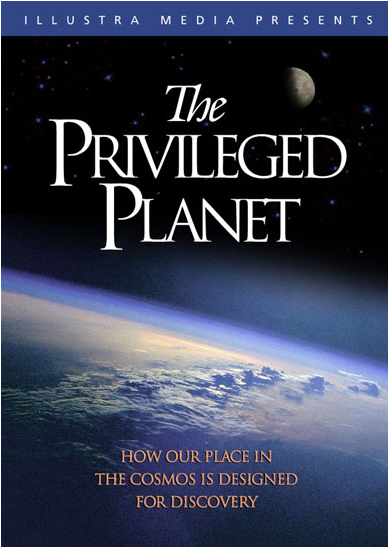 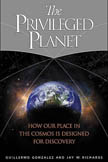 |
The Privileged Planet is a new ID video documentary that is a “must buy” for Lord of the Rings fans--if for no other reason than to listen to the 60 minutes of narration by John Rhys-Davis (the courageous and lovable dwarf known as Gimli). The deep distinctive Gimli accent, combined with the big symphony music, amazing space photography, ground-breaking computer animations of the universe, and recent scientific revelations make this an inspirational, as well as aneducational, experience.
Today, most scientists and philosophers claim that Earth is an ordinary speck of dust adrift, without purpose or significance, in a vast cosmic sea. This idea (popularized by the late astronomer Carl Sagan) is an outgrowth of the naturalistic philosophy that has dominated science for the past 150 years. Yet, remarkable evidence–unveiled by contemporary astronomy and physics–may now tell a very different story.
Building upon the overwhelming success of Unlocking the Mystery of Life (widely acclaimed as the most effective refutation of Darwinian theory ever produced), and based on the recent book by astronomer Guillermo Gonzalez and philosopher Jay Richards, this hour-long documentary explores the scientific evidence for intelligent design and purpose in the universe. In the process, Earth is revealed as far more than the product of time, chance, and random natural processes.
We now know that a rare and finely-tuned array of factors makes Earth suitable for complex life. We depend on our planet's oxygen-rich atmosphere, its large moon, its planetary neighbors, and its precise location within the solar system and Milky Way galaxy. But the story does not end here. For the same factors that make a planet like Earth hospitable to life also provide the best conditions for scientific discovery.
Is this correlation merely a coincidence? Or does it point to a deeper truth about the purpose of the cosmos and the reality of a transcendent designer? The answer could dramatically affect 21st century science.
Through stunning computer animation, interviews with leading scientists, and spectacular images of Earth and the cosmos, The Privileged Planet explores a startling connection between our capacity to survive and our ability to observe and understand the universe. A connection that points directly to the work of a creative mind and plan.
The DVD edition includes several bonus features that make this product a valuable teaching tool including 1) an animated journey from the Earth to the outer limits of the universe, 2) a special feature on the search for potentially habitable worlds, 3) Q&A session with several of the scientists featured in the video, 4) spectacular views of our planet as documented by astronauts and satellites, and 5) a reference list of books by scientists and scholars featured in the documentary. The animated journey to the edge of the universe alone is worth the price of this video as a valuable teaching tool to help students visualize the immense size and amazing structure of the universe.
Approximately 60 minutes
To order your copy of The Privileged Planet documentary video, go to http://www.arn.org/arnproducts/php/video_show_item.php?id=29
To save 10% and receive both The Privileged Planet book and documentary video go to http://www.arn.org/arnproducts/coverimages/v039sk.htm
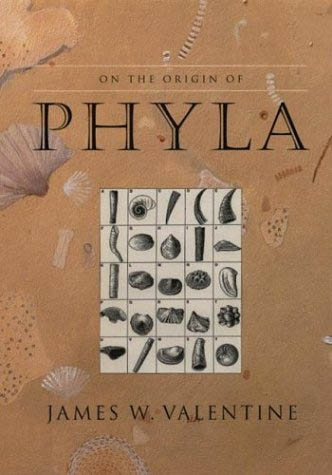 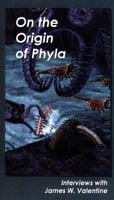 |
Several years ago we released a video interview with Dr. James Valentine on the origin of the phyla. Now his life’s work has been documented in this 614 page well-illustrated volume recently released by The University of Chicago Press. While Valentine asserts in the preface that his catalog of data supports Darwin’s conclusion that all living things have descended from a common ancestor, most of the evidence he reviews does not fit with classic neo-Darwinian expectations. Reviewers have also pointed out that the Cambrian explosion remains a mystery (see book review by R. Andrew Cameron, Science, July 30, 2004).
This book is an encyclopedic overview of the problem of the origin of the animals. Valentine writes with clarity and candor. Here's a sample:
"Trying to arrive at plausible interpretations for the early history of Metazoa is certainly a lot of fun, but it is also very frustrating. At the end of the day one is reasonably certain of the correctness of one's conclusions for only a limited range of evolutionary problems. For nearly every facet of early metazoan history there is an array of hypotheses that cannot be definitely falsified by the available data." (p. 516)
During the Cambrian Period, nearly every major group of animals suddenly appeared in the fossil record. Known as phyla, these groups each shared unique body plans and genetic characteristics. Some would be familiar to us today, such as mollusks or chordates (including fish), while others have long since gone extinct. Where these phyla came from is an enduring biological mystery on par with the origin of life on earth and the extinction of the dinosaurs.
Taking its title from Charles Darwin's On the Origin of Species, this book provides the first comprehensive investigation of the mystery of the origin of phyla. James W. Valentine, one of the twentieth century's most distinguished paleobiologists, integrates data from molecular genetics, evolutionary developmental biology, embryology, comparative morphology, and paleontology into a synthesis accessible to scholars from any of these fields. He begins by examining the sorts of evidence that can be gleaned from fossils, molecules, and morphology, then reviews and compares the basic morphology and development of animal phyla, emphasizing the important design elements found in the body plans of both living and extinct phyla. Finally, Valentine undertakes the monumental task of developing models to explain the origin and early diversification of animal phyla.
Truly a magnum opus, On the Origin of Phyla will take its place as one of the classic scientific texts of the twentieth century, and no doubt will provide fresh new data for the Darwin vs. Design debate.
Table of Contents
Preface
1. The Nature of Phyla
2. Design Elements in the Bodyplans of Phyla
3. Development and Bodyplans
4. Morphological and Molecular Phylogenies
5. The Fossil Record
6. Prebilaterians and Earliest Crown Bilaterians
7. Protostomes: The Ecdysozoa
8. Protostomes: Lophotrochozoa 1: Eutrochozoans
9. Protostomes: Lophotrochozoa 2: Lophophorates
10. Protostomes: Paracoelomates
11. Deuterostomes
12. Phanerozoic History of Phyla
13. Metazoan Evolution during the Prelude to the Cambrian Explosion
14. Metazoan Evolution during the Cambrian Explosion and Its Aftermath
Appendix: The Geologic Time Scale
Glossary
References
Index
To order the new book by James Valentine On the Origin of Phyla, go to http://www.arn.org/arnproducts/php/book_show_item.php?id=81
To order just the video interview with James Valentine go to http://www.arn.org/arnproducts/php/video_show_item.php?id=7
Or order the book and video interview and save 10% by going to http://www.arn.org/arnproducts/coverimages/v012sk.htm
William A. Dembski and Michael Ruse, editors
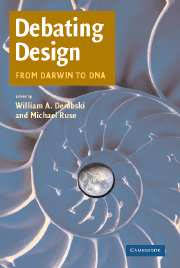 With
William Dembski and Michael Ruse as editors one can only imagine that this book
will live up to its title. They bring together an all-star cast to argue the
pros and cons of four positions: Darwinism, Self-Organization, Theistic Evolution,
and Intelligent Design. With Cambridge University Press as the publisher and
the balanced presentation, this book should soon find its way into university
classrooms.
With
William Dembski and Michael Ruse as editors one can only imagine that this book
will live up to its title. They bring together an all-star cast to argue the
pros and cons of four positions: Darwinism, Self-Organization, Theistic Evolution,
and Intelligent Design. With Cambridge University Press as the publisher and
the balanced presentation, this book should soon find its way into university
classrooms.
The contributors to this volume define their respective positions in an accessible style, inviting readers to draw their own conclusions. Two introductory essays furnish a historical overview of the debate.
Contributors
William Dembski, Michael Ruse, Angus Menuge, Francisco Ayala, Kenneth Miller,
Elliott Sober, Robert Pennock, Stuart Kauffman, David Depew, Bruce Weber, Paul
Davies, James Barham, John Haught, John Polkinghorne, Keith Ward, Michael Roberts,
Richard Swinburne, Walter Bradley, Michael Behe, Stephen Meyer
Table of Contents
Introduction
1. General Introduction -- William A. Dembski and Michael Ruse
2. The Argument from Design: A Brief History -- Michael Ruse
3. Who's Afraid of ID? A Survey of the Intelligent Design Movement -- Angus
Menuge
Part I: Darwinism
4. Design without Designer: Darwin's Greatest Discovery -- Francisco J. Ayala
5. The Flagellum Unspun: The Collapse of "Irreducible Complexity"
-- Kenneth R. Miller
6. The Design Argument -- Elliott Sober
7. DNA by Design? Stephen Meyer and the Return of the God Hypothesis -- Robert
T. Pennock
Part II: Complex Self-Organization
8. Prolegomenon to a General Biology -- Stuart Kauffman
9. Darwinism, Design, and Complex Systems Dynamics -- Burce H. Weber and David
J. Depew
10. Emergent Complexity, Teleology, and the Arrow of Time -- Paul Davies
11. The Emergence of Biological Value -- James Barham
Part III: Theistic Evolution
12. Darwin, Design, and Divine Providence -- John F. Haught
13. The Inbuilt Potentiality of Creation -- John Polkinghorne
14. Theistic Evolution -- Keith Ward
15. Intelligent Design: Some Geological, Historical,
and Theological Questions -- Michael Roberts
16. The Argument from Laws of Nature Reassessed -- Richard Swinburne
Part IV: Intelligent Design
17. The Logical Underpinnings of Intelligent Design -- William A. Dembski
18. Information, Entropy, and the Origin of Life -- Walter L. Bradley
19. Irreducible Complexity: Obstacle to Darwinian Evolution -- Michael J. Behe
20. The Cambrian Information Explosion: Evidence for Intelligent Design -- Stephen
C. Meyer
To order the new book Debating Design go to: http://www.arn.org/arnproducts/php/book_show_item.php?id=101
Video lecture with Dr. Scott Minnich
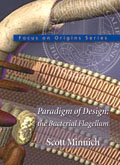 The
bacterial flagellum is a complex macromolecular machine. Are the forces of mutation
and natural selection sufficient to build these structures? Do type III secretory
organelles truly reflect intermediate structures? A review of our current understanding
of these systems is presented by Dr. Minnich in this well-illustrated lecture.
The
bacterial flagellum is a complex macromolecular machine. Are the forces of mutation
and natural selection sufficient to build these structures? Do type III secretory
organelles truly reflect intermediate structures? A review of our current understanding
of these systems is presented by Dr. Minnich in this well-illustrated lecture.
Scott Minnich holds a Ph.D. from Iowa State University. He is currently Associate Professor of Microbiology at the University of Idaho and is a fellow of the International Society for Complexity, Information and Design. Previously, Dr. Minnich was an assistant professor at Tulane University. In addition, he did postdoctoral research with Austin Newton at Princeton University and with Arthur Aronson at Purdue University. Dr. Minnich's research interests are temperature regulation of Y. enterocolitca gene expression and coordinate reciprocal expression of flagellar and virulence genes.
Scott Minnich is widely published in technical journals, including Journal of Bacteriology, Molecular Microbiology, Journal of Molecular Biology, Proceedings of the National Academy of Sciences, Journal of Microbiological Method, Food Technology, and the Journal of Food Protection.
This is an update of an earlier lecture video we carried by Dr. Minnich, which was presented at Westmont College (V021). Much of the same material is covered in this video, which is a better recording and includes a good Q&A session. If you own the first video, you probably don’t need to buy this one. But if you have never studied the detailed construction of the bacteria flagellum, and you’d rather not wade through the technical literature on your own, then this is another “must buy” video for your ID collection.
Recorded at the University of California, Santa Barbara. Program recording date & length: 10-25-03 ~ 1 Hour 23 Minutes.
To order your copy of The Paradigm of Design: The Bacterial Flagellum go to: http://www.arn.org/arnproducts/php/video_show_item.php?id=23
Lecture by Art Battson
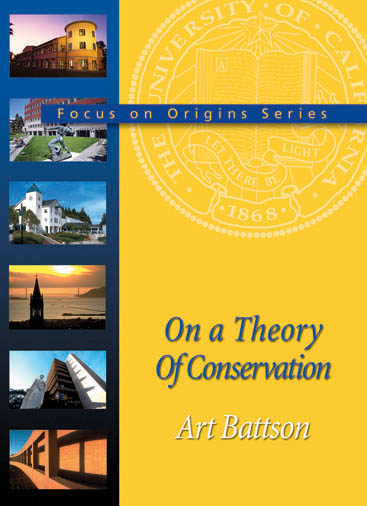 Darwin's
greatest insight was perhaps his admission in the Origin of Species that
one could come to "directly opposite conclusions."
Darwin's
greatest insight was perhaps his admission in the Origin of Species that
one could come to "directly opposite conclusions."
Modern neo-Darwinian theory is based upon the fundamental assumption of philosophical materialism that all genetic information and the arrival of the fittest arose purely by chance and that the environment, which also must have developed purely by chance, accounts for the survival of the fittest.
Descent with modification through a Darwinian process of random variation acted upon by a randomly generated environment is contingent, however, upon the existence of an irreducibly complex life form to modify, which is in turn contingent upon the existence of an extremely fine-tuned universe. The recent discoveries that the universe had a moment of creation and has been finely-tuned to allow complex life to exist imply an Intelligent Designer behind the entire cosmos. This makes the materialistic assumption that "absolutely everything arose out of absolutely nothing with absolutely no plan or purpose" somewhat dubious.
After describing the conflicts between Darwinian predictions and the pervasive patterns of natural history, Art Battson proposes the development of a Theory of Conservation to explain biology's "ordinary rules of stability" including genetic, ecological, and developmental factors which inhibit major evolutionary change from occurring. The ultimate purpose of a Theory of Conservation is to more accurately describe biological processes than neo-Darwinian theory is capable of doing.
Recorded at the University of California, Santa Barbara. Program recording date & length: 10-25-03 ~ 1 Hour 17 Minutes
To order On a Theory of Conservation go to: http://www.arn.org/arnproducts/php/video_show_item.php?id=24

For the last two months Dr. Glicksman has been exploring how the neuromuscular system works and what questions this knowledge should engender for Macroevolution. Part I dealt with the nerve's ability to propagate an impulse down its axon toward another nerve or muscle cell waiting at the synapse. Part II explained how a neurotransmitter was released from the pre-synaptic neuron and its impact on the post-synaptic cell. This month Dr. G goes on to explore our current understanding of how, once a muscle cell receives its message from a motor neuron, it is able to contract. Please join him in "Wired for Much More than Sound: Part III: Muscles and How they Contract." To read Dr. Glicksman's latest web column on design in the human body go to:
http://www.arn.org/docs/glicksman/eyw_040901.htm
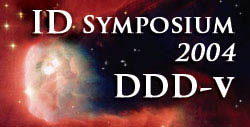 For
the past five years the Intelligent Design Network has done an admirable job
of hosting conferences around the country with the aim of exposing local educators
to the growing origins controversy. This year’s conference will be held
at the University of New Mexico in Albuquerque September 24-25. At DDD-V, key
design theorists will discuss issues from the origin of life through the remarkable
"recurrence of similar design solutions in different phylogenetic lineages,
despite their absence in a common ancestor." A prominent question
in biology today is "what drives this convergence?"
biochemist Michael Behe, Ph.D., mathematician William Dembski, Ph.D., and chemist,
Fazale Rana, Ph.D., and many others, will discuss the data and why it seems
to converge on design rather than a chance driven Darwinian process.
For
the past five years the Intelligent Design Network has done an admirable job
of hosting conferences around the country with the aim of exposing local educators
to the growing origins controversy. This year’s conference will be held
at the University of New Mexico in Albuquerque September 24-25. At DDD-V, key
design theorists will discuss issues from the origin of life through the remarkable
"recurrence of similar design solutions in different phylogenetic lineages,
despite their absence in a common ancestor." A prominent question
in biology today is "what drives this convergence?"
biochemist Michael Behe, Ph.D., mathematician William Dembski, Ph.D., and chemist,
Fazale Rana, Ph.D., and many others, will discuss the data and why it seems
to converge on design rather than a chance driven Darwinian process.
Another question to be considered is whether this fascinating subject is one that should be hidden from the view of rising young naturalists that are attending public schools. Should those institutions seek to inform students about this intellectually stimulating scientific controversy, or should the students be provided only with a bland diet of information which supports a naturalistic world view that happens to support non-theistic religions and belief systems. A number of educators will discuss education models that will bring students into the discussion so that they will truly be informed rather than indoctrinated. Two lawyers will also address the legal issues. The other side of the argument will also be presented--why some think that science education should exclude critical analysis of evolution and limit its offering to ideas and theories embraced by recognized institutions of science.
To view the full conference schedule or to register now for this exciting event go to:
http://www.intelligentdesignnetwork.org/2004symposium.htm
All of the ARN products can be ordered through our web catalog store with secure credit card ordering. There you will find a description of each product and you may add as many products as you would like to the electronic shopping cart. The suggested donation for each item includes USPS Media Mail for North American orders, which typically arrive in 5-7 days. Overseas prices include Foreign Surface shipping which may take 4-8 weeks. For faster shipping please include an additional donation and request either USPS Priority or Foreign Air. If you provide your email address, you will receive an email receipt of your order. Place your order today online at www.arn.org (click the products links on the top menu bar). If you have any problems or questions, or would rather place your order by phone, call our toll free number at 1-888-259-7102 and our staff will be happy to assist you (or leave your order with our voice mail system if we are out of the office).
ARN-Announce describes many of the upcoming events and new articles, books, videos and other resources on Intelligent Design. Please forward this message to several of your friends and colleagues to let them know about the resources available at Access Research Network (www.arn.org). Back issues of ARN-Announce can be found at www.arn.org/announce.htm
ARN-Announce is written by Dennis Wagner (dwagner@arn.org)
Access Research Network is a non-profit organization dedicated to providing accessible information on science, technology and society issues from an Intelligent Design perspective.
Mailing Address:
Access Research Network
PO Box 38069
Colorado Springs, Colorado
80937-8069
Contact:
(719) 633-1772 voice
(719) 520-1241 fax
(888) 259-7102 toll-free order line
On the web:
www.arn.org
TO ADD YOURSELF TO ARN-ANNOUNCE:
Send an email to "ARN-Announce-request@arn.org".
The body of the message should consist of the word "SUBSCRIBE"
and nothing else. Or visit the web page at www.arn.org/announce.htm
and select Subscribe and enter your email address. You will receive
a confirmation email indicating your name has been submitted to the
list. Follow the directions and reply to the email and your email address
will be added to the ARN-ANNOUNCE list.
TO REMOVE YOURSELF FROM ARN-ANNOUNCE:
Send an email to "ARN-Announce-request@arn.org".
The body of the message should consist of the word "UNSUBSCRIBE"
and nothing else. Or visit the web page at www.arn.org/announce.htm
and select Unsubscribe and enter your email address. Your email
address will be automatically removed from this list.
Copyright 2004 Access Research Network. All rights reserved. International copyright secured.
8.31.04